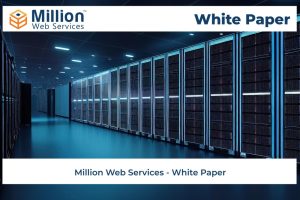In recent years, the rise of cloud computing has revolutionized the way businesses handle their data and applications. But what is cloud computing, and how does it compare to on-site data centers? In this blog, we will explore the key differences between cloud computing and on-site data centers and the benefits and drawbacks of each approach.
Cloud Computing: Cloud computing refers to the delivery of computing services, including servers, storage, databases, networking, software, analytics, and intelligence, over the internet. Cloud providers own and operate the infrastructure required for these services and enable businesses to access them on a pay-as-you-go basis. Cloud computing services are typically offered in three categories:
- Infrastructure as a Service (IaaS): IaaS provides businesses with access to virtualized computing resources, including servers, storage, and networking. This allows businesses to scale up or down their infrastructure according to their needs.
- Platform as a Service (PaaS): PaaS provides businesses with a platform to develop, run, and manage their applications, without the need to manage the underlying infrastructure.
- Software as a Service (SaaS): SaaS provides businesses with access to software applications, including email, customer relationship management (CRM), and productivity tools, over the internet.
- Scalability: Cloud computing allows businesses to scale their infrastructure up or down according to their needs. This makes it easier for businesses to handle spikes in traffic or demand without having to invest in additional hardware or software.
- Cost Savings: Cloud computing services are typically offered on a pay-as-you-go basis, meaning that businesses only pay for the resources they use. This can result in significant cost savings compared to on-site data centers, which require businesses to invest in hardware, software, and maintenance.
- Accessibility: Cloud computing services can be accessed from anywhere with an internet connection, making it easier for businesses to collaborate and work remotely.
- Control: On-site data centers give businesses full control over their infrastructure and applications. This can be beneficial for businesses that require strict security or compliance measures.
- Reliability: On-site data centers can be designed to provide high levels of uptime and reliability. This can be especially important for businesses that require 24/7 access to their data and applications.
- Customization: On-site data centers can be customized to meet the specific needs of a business. This can include hardware and software configurations, security measures, and other customized features.
- Cost: On-site data centers require businesses to invest in hardware, software, and maintenance. This can be a significant expense, especially for small businesses.
- Scalability: On-site data centers can be difficult to scale up or down according to the needs of a business. This can make it challenging to handle spikes in traffic or demand.
- Maintenance: On-site data centers require regular maintenance and upgrades to ensure optimal performance. This can be time-consuming and expensive.




